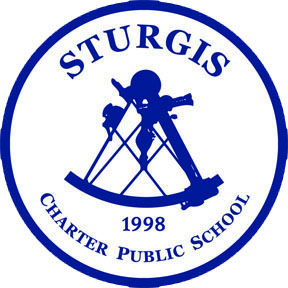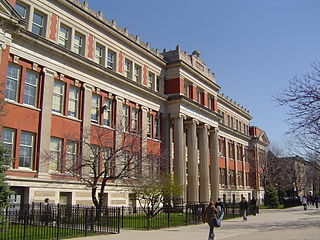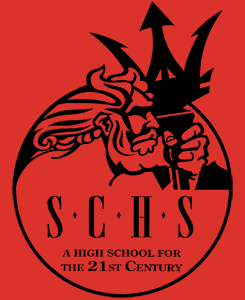Related Research Articles

Instituto Tecnológico y de Estudios Superiores de Monterrey (ITESM), also known as Tecnológico de Monterrey or just Tec, is a secular and coeducational private university based in Monterrey, Mexico, which has grown to include 35 campuses throughout the country. One of only 45 universities in the World to be ranked with 5 QS Stars, it is widely recognized as one of the most prestigious universities in Latin America.
Education in Mexico has a long history. Indigenous peoples created institutions such as the telpochcalli and the calmecac. The Royal and Pontifical University of Mexico, the second oldest university in the Americas, was founded by royal decree in 1551. Education in Mexico was, until the early twentieth century, largely confined to males from urban and wealthy segments and under the auspices of the Catholic Church.

The Sturgis Charter Public School is a dual-campus charter school located in the village of Hyannis, Massachusetts, United States. The school received its charter in February 1998 and opened in September for the 1998–1999 academic year with 162 freshman, 15 faculty and staff, a newly renovated facility, and a $1.2 million budget. The school philosophy is International Baccalaureate for all students.
The International Baccalaureate Diploma Programme (IBDP) is a two-year educational programme primarily aimed at 16-to-19-year-olds in 140 countries around the world. The programme provides an internationally accepted qualification for entry into higher education and is recognized by many universities worldwide. It was developed in the early-to-mid-1960s in Geneva, Switzerland, by a group of international educators. After a six-year pilot programme that ended in 1975, a bilingual diploma was established.

Lincoln Park High School (LPHS) is a public four-year high school located in the Lincoln Park neighborhood on the north side of Chicago, Illinois, United States. Lincoln Park High School, operated by the Chicago Public Schools District, opened its main present building in 1900. The school borders Oz Park, a public park owned by the Chicago Park District. It was formerly known as North Division High School and then Robert A. Waller High School. In 1981, the school began its International Baccalaureate program. It was one of the first schools to begin the program within the Chicago Public Schools district.
Luther College is a university college and high school located in Regina, Saskatchewan, Canada. The university campus of Luther College is located on the campus of the University of Regina and serves as a federated college of the university. The high school is located at 1500 Royal Street. There are approximately 2600 students and 1115 full-time employees at the university campus. As a federated college, Luther College is administratively and financially independent, but Luther students may earn a University of Regina degree and can take courses at the University of Regina.
Temescal Canyon High School is a public high school part of the Lake Elsinore Unified School District. Though it is located in Lake Elsinore, California, it also serves the areas of Canyon Lake and Horsethief Canyon. The school was opened for the 1991–1992 school year, graduating its first class in 1994.

Charles P. Allen High School (CPA) is a senior high school located in Bedford, Nova Scotia, Canada.

Meade Senior High School is a public secondary school for grades 9 through 12 located at Fort Meade, Maryland, United States and is administered by Anne Arundel County Public Schools. Since its opening in 1977, Meade High School has been accredited by the Middle States Association of Colleges and Schools Commission on Secondary Schools. The building is currently undergoing renovation.

San Clemente High School is a high school in southern Orange County, California, in the town of San Clemente. San Clemente High's attendance boundaries include the City of San Clemente and parts of Capistrano Beach and San Juan Capistrano. The school has approximately 3000 students.
Cypress Creek High School is located in Orlando, Florida, and serves students in grades 9 through 12.

Bayview Secondary School, initially known as Bayview High School is a grade 9–12, 2-semester secondary school operated by the York Region District School Board. It is located just north of the northeast corner of Bayview Avenue and Major Mackenzie Drive in Richmond Hill, Ontario, Canada. Bayview S.S. was officially opened on March 19, 1961.
Instituto México de B.C. is a private Catholic Elementary, Junior and High School located in the city of Tijuana, Mexico.

Celebration High School is a public four year high school located in Celebration, Florida, United States. It is a part of the School District of Osceola County, Florida.
CBTF (Centro de Bachillerato Tecnologico Forestal is a chain of Mexican high schools which offers programs to upgrade the regular degree to a technical-professional level. CBTF has campuses in four states.
CETMAR is a chain of Mexican high schools which offers programs to upgrade the regular degree to a technical-professional level. CETMAR has campuses located in 16 States.
Preparatoria Federal is a chain of Mexican high schools which offers programs to upgrade the regular degree to a technical-professional level. Preparatoria Federal has campuses located in 22 states.
The Instituto de Educación Media Superior de la Ciudad de México is the public preparatoria education system of Mexico City.
Events in the year 1956 in Mexico.
Events in the year 1997 in Mexico.
References
- ↑ "PFLC 1/1". sites.google.com. Retrieved 2022-10-13.
- 1 2 "PFLC 1/1 - MANUAL ESCOLAR". sites.google.com. Retrieved 2021-03-11.